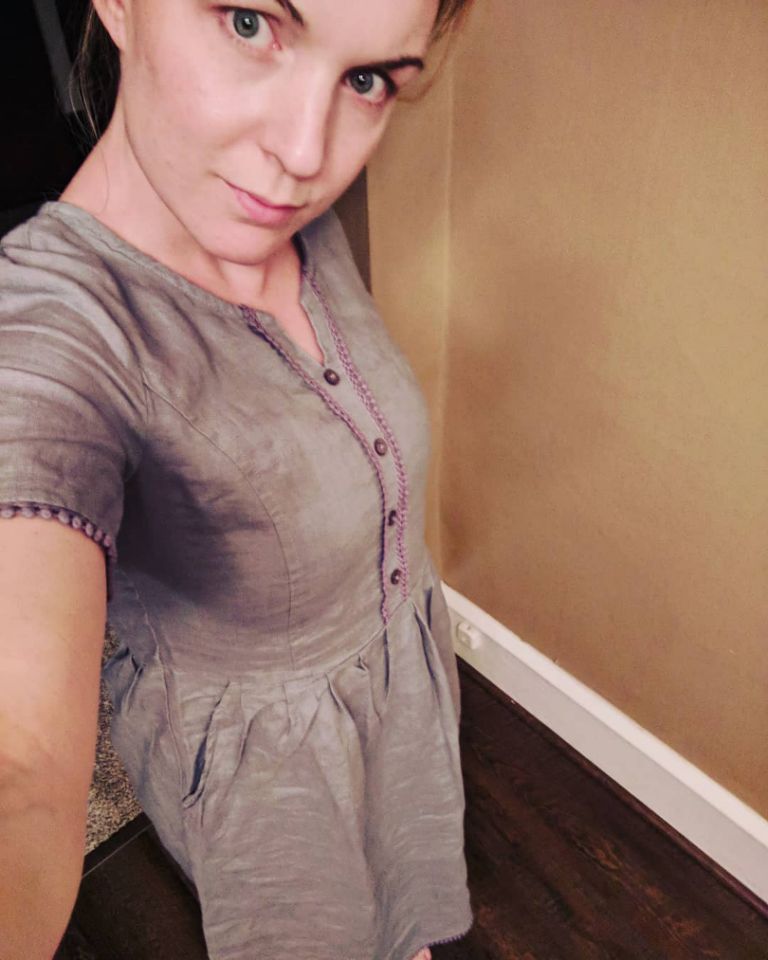
From Yahoo Lifestyle, 9/2018
At the end of this summer, when most parents and teachers were doing their back-to-school shopping and some were getting ramped up for New York Fashion Week, Julia Mooney decided to go the other direction entirely. The New Jersey art teacher pledged to wear the same dress every day for 100 days.
“I was just sitting around talking to my husband, and I jokingly said, ‘I’m just going to wear the same thing to school every day,’” Mooney, who teaches at William Allen Middle School in Moorestown, N.J., tells Yahoo Lifestyle. “Then I really started thinking about it a little bit more seriously because it actually seemed like a good idea.”
Mooney isn’t doing this just to eliminate the dilemma of what to wear every day. She, her husband, and their three kids have been trying to reduce their environmental impact by consuming less — sewing clothing, planting a vegetable garden, and raising chickens in their backyard. She decided that this could be both an extension of that, as well as a lesson for her new students.
“It was a nice opportunity to demonstrate to the kids how artists often blur the lines between art and activism,” Mooney says.
There are other points she wants to make to her students. For one, she wants them to be more aware of the societal pressure we all feel to wear something new and different every day, pressure Mooney is not immune to.
“I like to wear clothes; I like to express myself,” she says. “I know that we are all looking at what the other person is wearing. To wear the same thing every day is uncomfortable because we have this deeply ingrained cultural expectation to change every day. It’s weird, but because it’s weird it’s making us all think.”
She’s also keen to discuss the environmental impact of the fast-fashion industry. By many estimates, global consumption of clothing has gone up by 60 percent since 2000, in large part because we use our clothing less before tossing it to buy something new. Although new clothing costs less at the register than it used to, we’ll be paying for it in other ways: It takes 713 gallons of water to make a traditional cotton T-shirt, HuffPost reports. A polyester shirt would use less water, but its manufacture emits twice as much carbon dioxide. The textile industry emits more carbon dioxide annually than international flights and airline shipping, according to Nature, and generates one-fifth of China’s water pollution, according to Greenpeace.
Mooney wants to discuss how the demand for cheap clothing also creates an incentive for companies to manufacture it in countries with cheaper labor and poor working conditions. That’s part of why for these 100 days she is wearing a dress from London-based Thought Clothing, which certifies its apparel as fair trade. The pebble gray Jazmenia dress was also a practical choice.
“I needed to pick a dress that was going to be versatile because I’m going to be wearing it through the winter, and when we started the school year it was 90 degrees,” she says. “So I’m going to have to add some tights to it and some boots during the winter, and maybe a cardigan. I also chose a plain dress so I could maybe change it up with a scarf or something. It’s also made of a durable material, hemp, which sort of wears in instead of wearing out.”
After one week, Mooney’s experiment is going well, and her students seem interested in what she’s doing.
“I’m walking down the halls and they’re like, ‘Is she still wearing that dress?’” she says.
“I just try to get to it real quick and make sure that it’s clean,” she says. And though she has a backup dress just in case, she hasn’t had to use it yet. “So far I’ve been lucky.”
The project has already inspired copycats too: Mooney’s husband and three teachers at the nearby high school are following her example. Though some of us may still cringe at the thought of never changing clothing, Mooney reminds everyone that what she’s doing used to be the norm.
“My house doesn’t have any closets,” she says. “We had to add closets because my house is from the ’30s, and people just didn’t have as many clothes back then.”
When the 100 days are done, Mooney doesn’t think she’ll go right back to her old ways.
“I kind of value things more now — respecting the planet for my children and respecting other humans that are working abroad, and kind of trying to value myself in a different way, as opposed to caring so much about what I look like,” she says. “I’m probably going to cut down on my wardrobe and have less, and try to buy used clothes and try to make some things more and get creative.”





